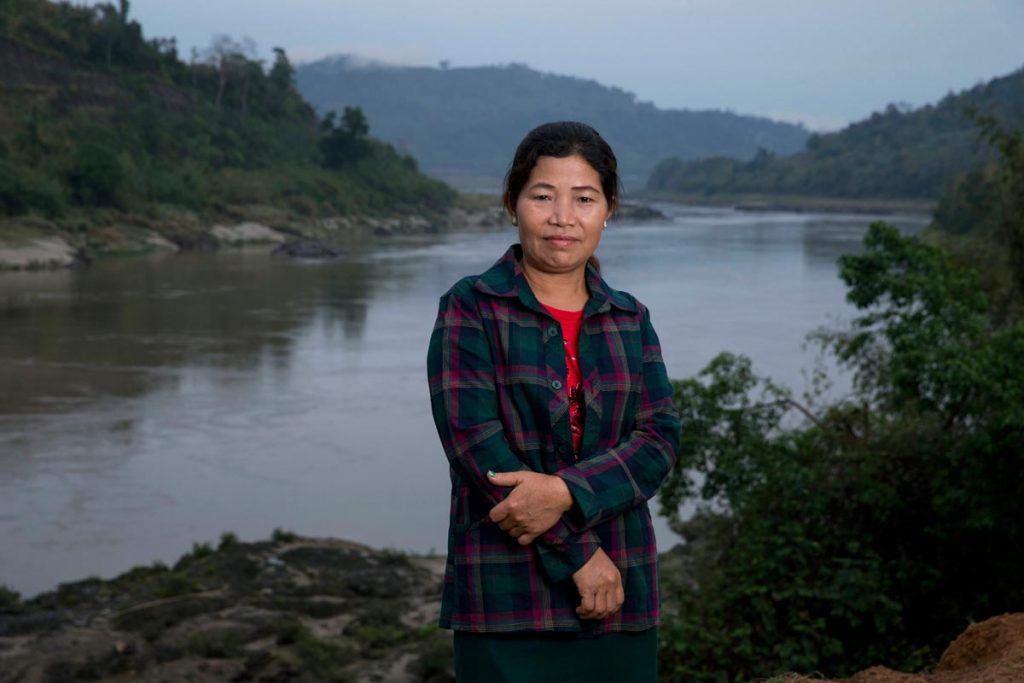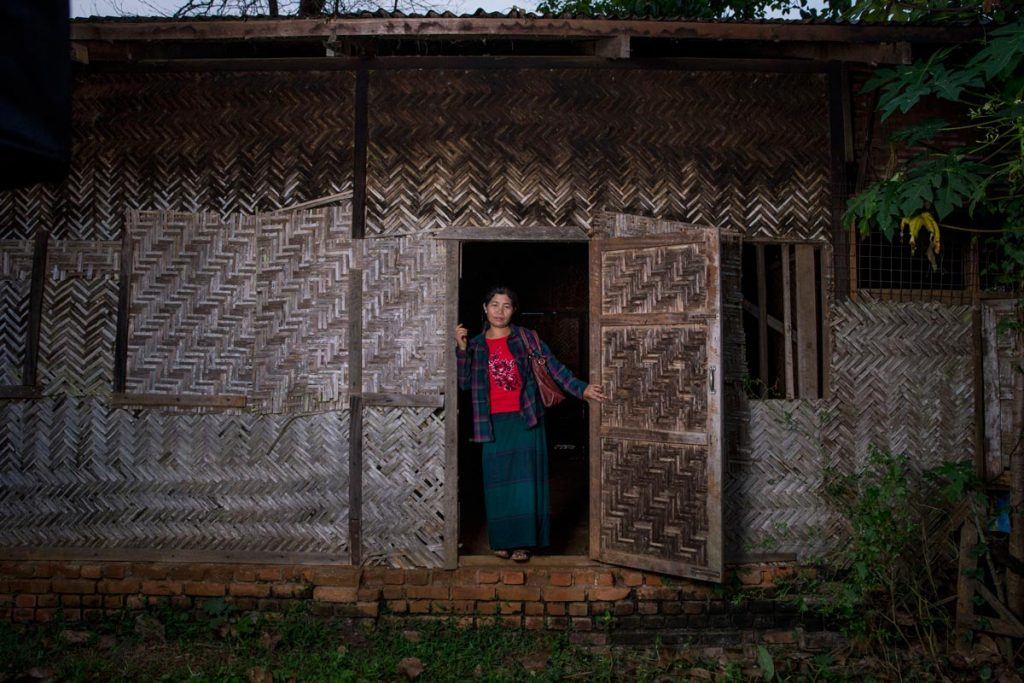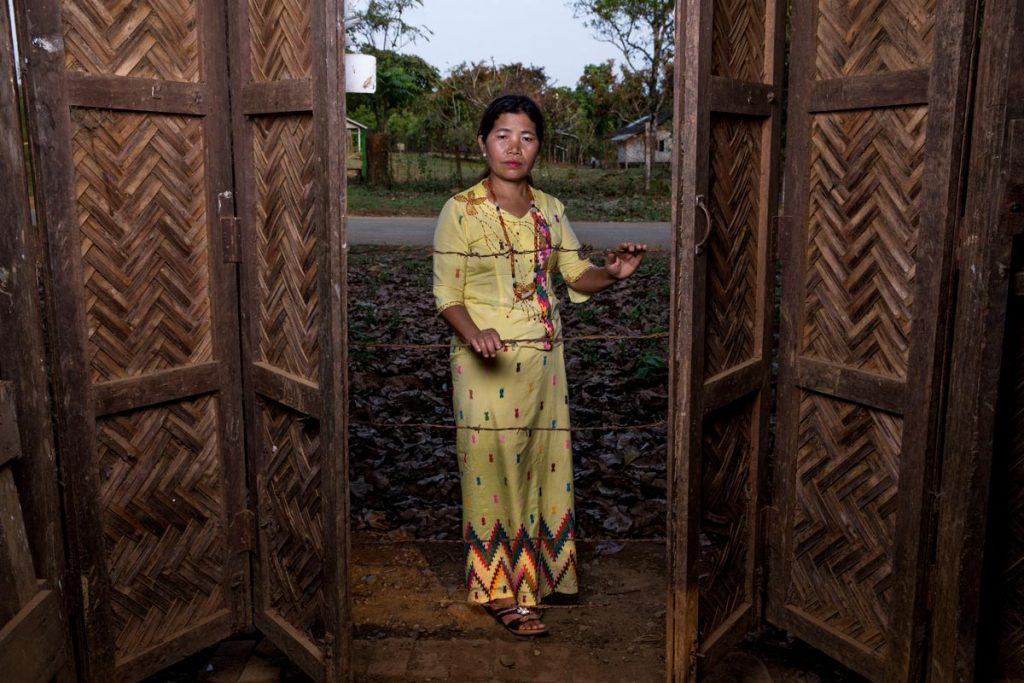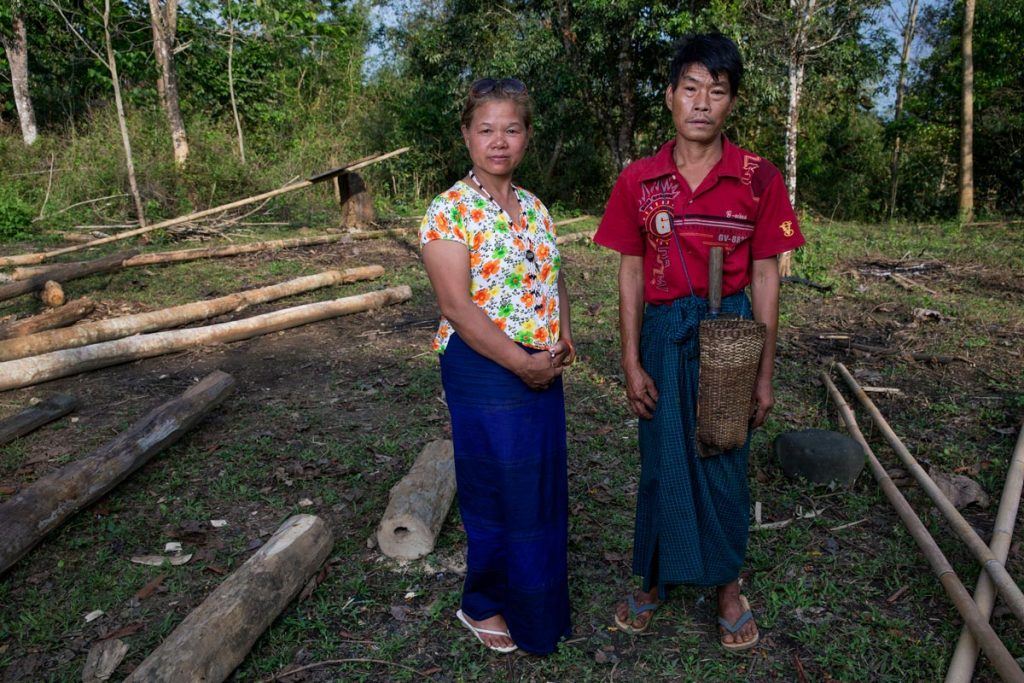“I can still remember people crying when they had to leave their village,” recalls Ja Hkawn, a serious woman who has an air of sadness about her.
The emotions sparked by this forced departure are difficult for her to erase. Ja Hkawn is from Tang Hpre village in northern Burma, near the confluence of two powerful rivers in Kachin State. A 49-year-old mother of eight, Ja Hkawn became a leading activist speaking out against the construction of a dam that, if completed, would flood and submerge over 73 surrounding villages. Thousands of people from those villages—like Ja Hkawn and her fellow villagers—were forced from their ancestral homes to make way for the dam.

For many years, the Chinese company China Power Investment Corporation (CPI) has been trying to complete the construction of the Myitsone Dam, a large hydroelectric power development project located at what is known as the Myitsone confluence of the Mali and N’mai rivers and is the source of the Irrawaddy River. If completed, it would be the 15th largest dam in the world. Yet roughly 90% of the electricity generated from the dam would be transferred across the border to China, providing little benefit for people in Burma.
The construction of the dam has been halted since 2011, but the thousands of villagers forced from their residences are not allowed to return to their homes just a few miles away.
The conflict over the Myitsone dam illustrates a broader pattern of injustice in Burma in which exploitative development projects intersect with discriminatory policies against ethnic minorities in Burma. The majority of Burma’s people make a living as farmers in rural areas, but Burmese laws do not protect their access to or control over the land. Burmese environmental regulation is so weak that corporations launch development projects—including hydro-electric dams, mining and huge agricultural projects—without consulting local communities. Ethnic minorities like those in the Kachin state are especially vulnerable to injustice in the form of land grabs, rape, torture, and more.
A Life Uprooted for Thousands
Ja Hkawn is one of the thousands who were coerced to leave their homes and move to relocation sites constructed by CPI, the Chinese company, and the Burmese government. Not only did the dam project displace these people from their homes, it also stripped them of their means of survival.
In her old village, Ja Hkawn and her former husband owned the land on which they lived and worked, where they provided for their family by farming. Moreover, Ja Hkawn also contributed to the family’s well-being by managing a store on the land next to her house and across the from a large church.
Making a difficult life even more challengeing, Ja Hkawn’s husband abused her both emotionally and physically. Showing remarkable strength in the face of this abuse, she found the support to get divorced in 2005. Just two years after she was able to leave her abusive husband, she learned about the threat of the Myitsone dam that would flood her home and force her out of her community:
“I heard that the dam would be 500 feet high, and that it would be impossible to stay in our village because the water would be so high that it would flood everything.”
She began talking with others in her community about the consequences of the dam, and in 2008, she became involved with local community groups working against its construction. She connected with many women’s groups in the local towns, and she became the leader of one such group through her local church. Together, they started mobilizing against the dam.
CPI pressured people to leave their villages by promising to move them into new homes miles away in relocation sites, and offering compensation in the form of food and money.
Describing CPI’s coercive tactics, she recalled, “We were told, ‘If you go now, we will move your things and support you… If you move later, we won’t support you.’”
Ja Hkawn and other community members refused to leave their villages for four years. Predictably, CPI applied more pressure and the situation got worse. To pressure local residents, the Burmese government and CPI moved the village’s schools to the relocation sites, forcing families with children to move, too. Speaking softly, Ja Hkawn lamented, “They made life impossible by destroying the school. People from the village said they had to move here…”

In April 2010, a bomb mysteriously exploded near CPI’s project site, and Ja Hkwan shared that neither she nor anyone she knew understood how it happened. Still, the Burmese government took advantage of this event and rounded up and interrogated Ja Hkawn and other leaders who were leading the fight against the dam.
“I was investigated because of the bomb. Many leaders were investigated and interrogated. Many leaders ran away from the village. I was questioned all night. I was very afraid.”
Finally, in 2011 Ja Hkawn decided, after years of intimidation, that she and her family would move to the relocation site. For over five years now, she has been living in one of the houses constructed by CPI, but “the houses are not built well and they are shaking.”
CPI and the government have also cut off the food and money to Ja Hkawn and other activists, because they continue to speak out against the dam.

Forming a movement with MRJ
In September 2012, Ja Hkawn and other local activists in Kachin state who were displaced or otherwise harmed by the government’s mega-development projects formed a group called Mungchying Rawt Ja (MRJ)—“Civil Development” in Kachin, the local ethnic language.
With support from AJWS, MRJ promotes grassroots community engagement in decision-making around development projects with the goal of protecting the human rights of local people and safeguarding natural resources. To this end, MRJ brings local people, including farming communities, together to organize, discuss their rights, and challenge the confiscation of their land by local development projects.
The dam’s construction was halted thanks, in part, to thousands of people in Kachin State who voiced their opposition—including the activists who are now engaged with MRJ.
Uniting and empowering women through conversation and song
In April 2016, Ja Hkawn and another leading MRJ activist named Lu Ra organized and led a meeting of nearly 50 women who have been negatively affected by the Myitsone dam project. The women activists came from a number of surrounding villages, some traveling many miles by foot During the meeting, the women shared new information about the dam so that they could all learn from each other and bring this knowledge back to their communities. Ja Hkawn and Lu Ra emphasized the important role that women must play in uniting and fighting for their rights together.

Ja Hkawn told the women, “It is so important that we work for women’s rights. I want other women leaders to work on these kind of issues. We have to build a strong community.”
Lu Ra told the women, “Women should be leaders, and that’s why we need to come together to gain knowledge from each other.”
The dam’s proposed location at the headwaters of the Irrawaddy river, Burma’s most important water resource, is a sacred site for the Kachin people. Ja Hkawn reminded the women of this during the meeting of the site’s spiritual significance and the challenges they will face in gaining access to water in the future:
“This is a very beautiful place God has given us. It is important for our next generation. This kind of beauty will be taken away. What can we leave for our next generation? If the dam is built, we will not have our lands and there will be less water and more drought. In some places, the villagers have nothing to eat. If we don’t act now, we may face the same situation. We don’t know what will happen in the future if the dam is built. We are living in these difficulties and don’t know what difficulties we will leave for our next generations. If we stay silent, we will get nothing.”
During the meeting, Lu Ra also led the group in song and dance, uniting women from different villages to sing about their river, their ancestral villages, and their leadership.

Like Ja Hkawn, Lu Ra and her family were forced to leave their old village because of the dam. When Lu Ra began to speak out, the government cut her off from the food and money that families in the resettlement village receive. To this day, both women and their families do not benefit from any of the food or money given by the government to others who relocated. This is their punishment for continuing to speak out against the dam. Lu Ra’s relocated home was also mysteriously burnt down while she was protesting the dam, an act which she suspects may have been an act of intimidation because of her activism against the dam.
After years of being displaced from their old home in their village, Lu Ra and her husband are now working to build a new home on their land in the village. She returns to her original land to farm, and she saves the money she makes to rebuild their home. Lu Ra plans to live in her old village, even though the government has not approved residents moving back.

Speaking at the meeting by the riverside, Lu Ra explains that MRJ is crucial for the surrounding communities:
“If there were no MRJ, the government would do whatever it wants. They might have already built the dam. The government believed that the community was not educated so the government could do what it wished. But because of MRJ, people are becoming educated and not letting that happen. And with the help of MRJ, now we are using the media to publicize and share our story and hold people accountable. ”
“In the past, villagers were afraid, but now they’re much more aware of their rights. Now people are starting to come back and defy the government and the Chinese.”
Lu Ra tells the women during the meeting:
“If we are together, we have strength. We have to work to reject building the dams. Our life depends on the river.”
Hope for the future
Through MRJ, Ja Hkawn and Lu Ra have given women a sense of community and empowered others to talk about how the dam affects them, their families and communities. Ting Wang, another local woman, exemplifies how MRJ is creating advocates. Ting Wang explains that the MRJ meetings among the women have given her a sense of community and knowledge that she otherwise would not have.
“Because of MRJ, I have more awareness of the dam. The women and I conducted a survey with MRJ’s help, which confirmed that our local population was overwhelmingly against the construction of the dam. Eighty percent of the local people who we surveyed voted against building the dam. We sent that documentation to the government. Without MRJ, we wouldn’t have the knowledge to document that, legitimize that, and prove it to the government.”
Although the Myitsone dam project is still in limbo today, Ja Hkawn and Lu Ra arehopeful that Burma’s new leadership will listen to Burma’s local people and consult local communities. They’re hoping that with MRJ’s help, they and thousands of displaced villagers can move back to their ancestral homes and save their river and their land.
Encouraging the women as she always does, Ja Hkawn shares with the women who traveled to the riverside, “If we work together, we will be able to make change.”
AJWS’s work in countries and communities changes over time, responding to the evolving needs of partner organizations and the people they serve. To learn where AJWS is supporting activists and social justice movements today, please see Where We Work.

